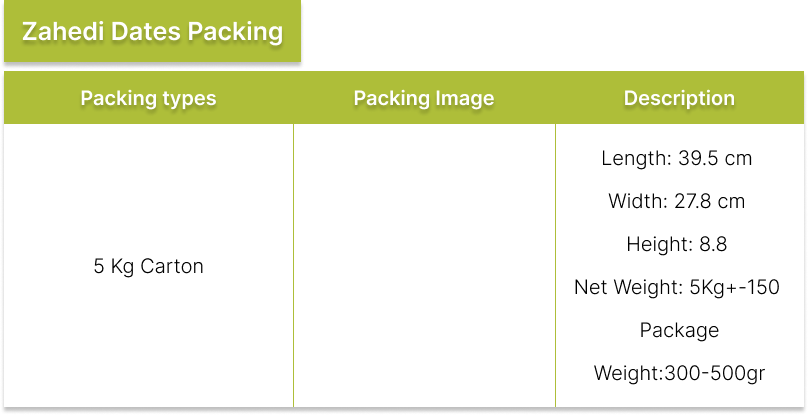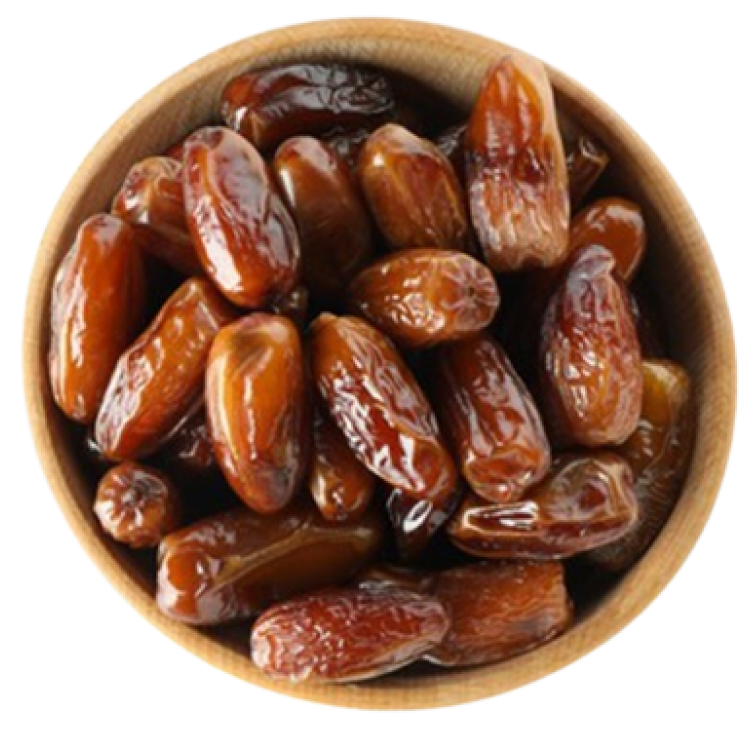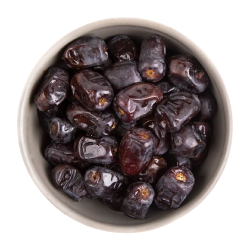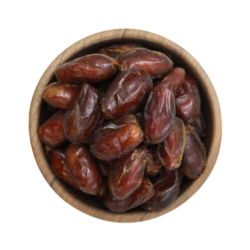Zahedi dates
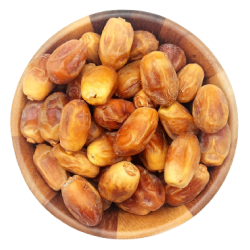
Zahedi dates, also known as “Ghasb” or “Zahidi dates“, are a delightful delicacy originating from Fars Province, Iran. In this blog post, we will explore the fascinating characteristics of Zahedi dates, the optimal storage conditions, and the factors that contribute to their quality.
Zahidi dates are characterized by their yellow gold color, which ranges from light brown to a vibrant shade. These dates possess a unique shape, being short, oval, thick, and elongated, tapering to a narrow and sharp end. In terms of taste, this type is less sweet compared to other varieties, offering a delicate balance of flavors.
Harvest Time and Origin:
The harvest season is in September and extends until mid-October. Grown in the fertile lands of Fars Province, Iran, dates benefit from the ideal climatic conditions and rich soil, resulting in their exceptional quality.
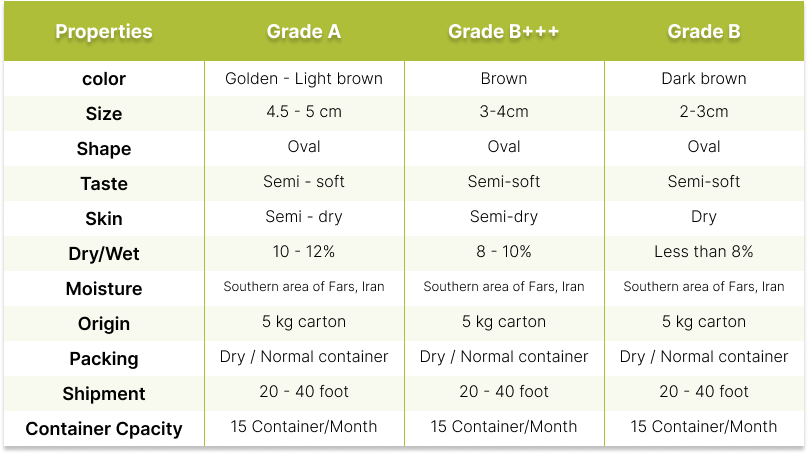
Storage Conditions:
To preserve the freshness and quality of Zahedi dates, it is recommended to store them at a temperature ranging from +3°C to +8°C. This controlled environment helps maintain their texture, flavor, and nutritional value, ensuring a delightful experience with each bite.
Factors Affecting Quality:
The quality of Zahidi dates is determined by several factors. Firstly, the moisture content plays a crucial role, with the dates requiring a balance between not being too low or too high in moisture. Additionally, the light golden color and a size range of 4.5 – 5 cm are indicative of premium quality.
Zahedi dates, with their distinctive appearance and delightful taste, are a true treasure from Fars Province, Iran. Whether enjoyed as a standalone treat or incorporated into various culinary creations, this is a versatile and nutritious addition to any diet. Let the allure of these dates transport you to the captivating lands of Iran and savor the taste of this remarkable delicacy.
